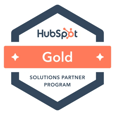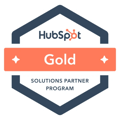Discover the Key Differences Between Inbound vs Outbound Marketing: How to Transform your Marketing and Grow Smarter
It’s 2021. Marketing has changed. Our entire world has changed. Consumers are smarter, busier, and challenged like never before. That means they live and function in an ocean of increasingly growing choices and advertisement noise.
Instead of contributing to that noise, which confuses and loses customers, why not appeal to and delight customers where they are, instead of where you want them to be?
Enter inbound marketing. In this blog, you’ll learn the key differences between traditional, bloated marketing tactics and inbound, and why inbound is the smarter solution that boosts leads and converts faster.
What is inbound marketing?
Inbound isn’t about you. It’s about your customers! It’s not about your products or services or the latest gimmick. Inbound is all about becoming a resource for your customers and providing solutions to their problems. With this methodology, you’re bringing the right people in, and meeting them where they are, not where you want them to be.
Think about the buyer’s journey. This is a process every consumer goes through. Let’s break it down:
- Awareness: A consumer discovers a problem in their life
- Consideration: They begin searching for a solution. The consumer finds your business and begins comparing you and your competitors.
- Decision: Finally, a decision is made about which product or service the consumer will use.
Inbound marketing experts understand and embrace this journey and leverage it to appeal to customers at each stage. Instead of pushing awareness stage content to a consumer in the decision stage, appeal to the decision-making process itself in your advertising or offer. That’s one of the many ways inbound saves you time, money, and brainpower!
The buyer persona
Here’s a brief strategy example. Let’s assume your current strategy appeals to consumers in the awareness stage in the buyer’s journey. Your target consumer, or buyer persona, discovers they have a problem. They begin trying to understand their problem by searching for common questions and explanations online. After all, most problems can be solved with existing products and services available at the tap of a button.
This is where inbound marketing strategy comes in.
Your website must address your buyer persona’s problem. Create content that shows you understand their pain, and offer a clear path from where they are now, to the successful future they'll experience when they choose your product or service. Think of inbound marketing as a helpful, proactive guide. Instead of yanking your buyer persona along a predetermined path, guide them toward success.
For your audience, success is a solved problem. For your business, success is solving your customer’s problem, not more leads or more deals closed. More leads and more closed deals are the results of successfully solving your customers’ problems! That distinction is key: when you keep your customer’s problem at the forefront of your marketing strategy, every step of the sales journey becomes clearer under one primary controlling idea.
Inbound content and resources
Here are a few pieces of content you can leverage with inbound marketing to attract customers and solve their problem:
- Blogs: The best blog offers value beyond the click. It features a powerful headline and delivers on the promise that this blog can—and will—offer a path to solving a problem. Structure your blogs with accessibility in mind and be sure to pepper high-value keywords within your blog copy for SEO.
- Transitional CTAs: Calls to action are powerful devices that clearly communicate the next step. If someone isn’t ready to commit to your solution, transitional CTAs instead offer a secondary path toward that same goal. This is nurturing, educational content that offers value for your prospect and in exchange, allows your business to obtain essential contact information, like an email address. Content offers in a transitional CTA include ebooks, webinars, templates—any helpful content that positions you as a resource.
- Testimonials: People trust people more than they trust companies. And for good reason: people aren’t trying to sell you a service. When prospects read informative testimonials, they understand it’s not a sales pitch. It’s an honest review documenting their working relationship with your company. That’s a powerful piece of content, and in some cases, it’s the difference between a prospect choosing your business to solve their problem or looking elsewhere.
What is outbound marketing?
Outbound marketing is the traditional, outdated marketing tactics everyone is familiar with. While inbound marketing pulls your audience in, outbound marketing pushes information out. You’ve heard of “spray n’ pray” marketing? What about the “shotgun approach” or a newsletter “blast"? That’s outbound. Yes, there is a strategy behind traditional marketing. But it’s far more unreliable and offers significantly less control over a prospect’s buying journey than inbound marketing.
Outbound marketing used to be the dominant marketing approach. What happened? Why is outbound marketing no longer the tried and true approach to a business’s marketing needs?
Well, there are two main reasons to cover:
1. Attention
Today’s consumers are inundated with advertisements, emails, and calls to action. It can be overwhelming and frustrating. That’s why consumers do everything they can to avoid ads, such as ad-blocking software, filters, and paid subscription services that remove ads entirely from traditional broadcasting. Outbound marketing is a primary culprit of this issue. It solved a business’s need for advertising but failed to ask how the spray n’ pray method affected the target buyer. Crucially, outbound marketing fails to obtain consent. Outbound never considers, “Is this content relevant to your needs?” or “Would you like to hear about our product or service?”
2. Information
Yesterday’s information gatekeepers are gone. Before, traditional media dominated how the average customer learned new information. Now, information has never been more readily available. Outbound marketing struggles to consider this massive shift in information accessibility. Gathering the required information to make an informed purchase takes less time and requires fewer resources than it once did.
How to transform your marketing from outbound to inbound
It’s clear inbound marketing is a smarter way to market to your customers. Instead of pushing information out to people committed to tuning you out, pull your audience in and offer a solution to their problem.
But shifting your existing outbound tactics to the more inclusive, holistic inbound methodology is harder than it might seem. Here are three ways you can shift your outbound messaging towards inbound as soon as next week:
1. Begin creating a website that serves as a hub for your business
Your website is your most important salesperson and most valuable employee. It needs to serve your employees just as well as it serves your customers. Think of it as a hub! If your website struggles to communicate how your business solves the customer’s problem, then what good is it? If your website creates more friction and problems for your team than it solves, what’s the point of a website at all?
The right website starts with a growth-driven, inbound approach. Click here to learn more about how to build a better website for your business.
2. Communicate your persona’s buying journey by telling a story
Storytelling is a powerful tool honed by our species over thousands of years. Don’t stress about what you need to say. Instead, focus on how you can tell a compelling story that speaks to your target audience.
- Offer a clear, compelling introduction that illustrates value
- Address your audience’s problem
- Explain why it’s “just plain wrong” for them to have to struggle with this problem
- Identify the stakes, or what’s at risk by not doing business with you
- Establish your credibility and authority
- Offer a solution
- Provide a step by step plan
- Illustrate what success looks like if they purchase your product or service
In a nutshell, this is the StoryBrand methodology.
3. Work with an inbound marketing agency that can handle everything for you
We know inbound marketing can be a lot to handle on your own. It almost sounds too good to be true. Yes, inbound is complex. But that’s what we’re for. Sauce Agency is a HubSpot Gold Certified Agency Partner. That means we understand inbound marketing inside and out and we know how to leverage inbound software solutions to address your current marketing issues, implement data-driven changes, measure results, and improve as we go.
We’re also a Certified StoryBrand Agency. Our Growth Guides understand how to tell a compelling story that sells. We’ll work with you to develop the right story for your website that speaks directly to your audience and positions your business as their guide. That way, they understand that your business can lead them to success. Schedule a call with a certified Growth Guide today to improve your marketing, position your business as an industry leader, and grow smarter.

.webp?width=12693&height=4513&name=Sauce%20Logo%20Dark%20Ht%20(1).webp)

.webp?width=180&height=64&name=Sauce%20Logo%20Dark%20Ht%20(1).webp)










